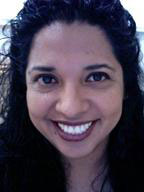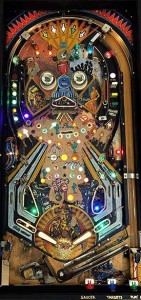CSUN Professor Beatriz Cortez’s ‘Nomad World’ Art Exhibit Offers Kaleidoscopic View of Multiculturalism
A brief video of The Pinball Machine (The Beast) by Beatriz Cortez.
California State University, Northridge Central American studies professor, Beatriz Cortez, challenges viewers to explore the various psychological and physical realities of multiculturalism with her latest mixed media interactive art exhibition.
The show, “Nomad World,” currently at the Stamp Gallery at the University of Maryland, includes five sculptures/installations on display through March 12.

Beatriz Cortez
“I created this exhibition thinking about the experience of simultaneity that one has when one actively lives in two different cultures, two different versions of modernity, two different contexts, two different ideals of temporality, or the concept of time,” said Cortez, an El Salvador native who has lived in the United States since 1989.
Cortez frequently travels between Los Angeles and Central America. She used her multicultural experiences as inspiration for her current exhibit.

The Pinball Machine (The Beast) by Beatriz Cortez.
One of the exhibit pieces, “The Pinball Machine (The Beast),” is a restored and re-imagined classic pinball game. The original theme of the game, “The Black Pyramid,” harks back to early romanticized archeological adventures – think “Indiana Jones” – that were covers for colonial conquest.
Cortez transformed the old colonialist archaeological narrative of the game to reflect the risks of immigration. The pyramid becomes The Beast, the train that carries travelers on their journey from south to north. The drop targets represent the “Minute Men,” an armed volunteer organization who patrol the U.S. border in search of illegal border crossings. The points represent the numbers of deportees.
“The [game] became a symbol of the violence and the obstacles that immigrants face when arriving here,” Cortez explained. “One is able to interact with the pinball machine, but one is also able to watch a video that was shot from the perspective of the ball on the playfield. As a result, we are invited to imagine ourselves having multiple perspectives.”
“I hope the viewers will be able to interact with the machines and have fun playing, but at the same time, that these actions will trigger their own memories, will invite them to leave the show and think critically about these issues,” she said.
Cortez played a key role in the development of CSUN’s Central American studies program, which is the only one of its kind in the U.S. to offer a bachelor of arts degree in Central American studies.
CSUN’s Central American studies program, housed in CSUN’s College of Humanities, has a three-part mission: to empower the large and growing Central American community in the U.S by promoting academic excellence, community involvement and cultural diversity; to open spaces of global citizenship and dialogue between academia and society at large that contribute to the construction of a Central American transnational identity; and to promote understanding and appreciation for the diverse Central American cultures, ethnicities, experiences and world-views from an interdisciplinary global perspective.
For more information about Cortez and her current exhibit, please visit www.beatrizcortez.com.

 experience
experience